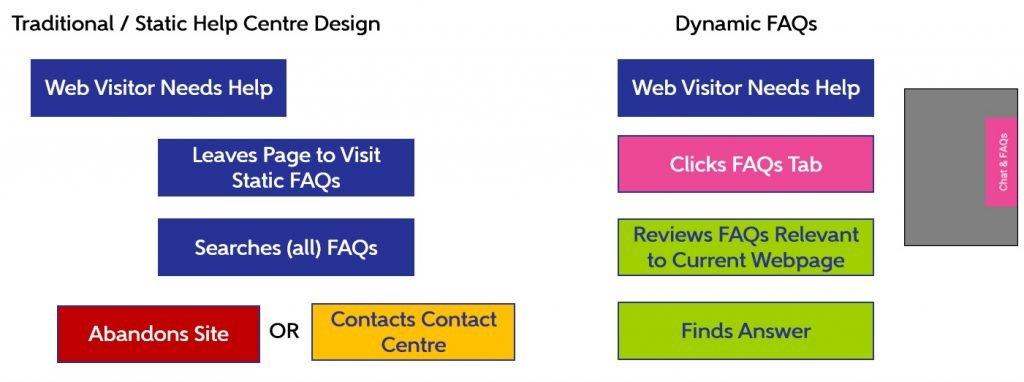Using Artificial Intelligence to build a great future for CX
https://contactcentresummit.co.uk/wp-content/uploads/2018/08/Britannic-AI.jpg 960 640 Stuart O'Brien Stuart O'Brien https://secure.gravatar.com/avatar/81af0597d5c9bfe2231f1397b411745a?s=96&d=mm&r=gAI is already here and it’s revolutionising the way businesses manage their data to transform the customer experience (CX). Henry Jinman, Commercial Director at EBI.AI, says it pays to tread with caution, despite all the success stories and shares his top 3 Tips for before you begin…
No longer confined to the realms of science fiction, Artificial Intelligence (AI) is here and companies are waking up to the potential of machine learning to push the boundaries of customer interactions and drive effective CX strategies. The truth is AI is totally revolutionising our approach to data through its amazing ability to capture, process and analyse masses of unstructured data across the business. By automating customer contact management, data recording and analysis processes, AI can readily identify patterns of consumer behaviour that give contact centres and customer service operations a new competitive edge. With vital customer intelligence at their fingertips, frontline staff are able to push out targeted sales content, pre-empt what customers will purchase in the future and predict their loyalty and value to the business.
Here are just two real-life success stories to prove it. Royal Bank of Scotland manages 17 million customers but managed to raise its Net Promotor Score by 18 points unanimously after deploying AI while US telecommunications giant Sprint achieved a 14% increase in customer retention in just six months, simultaneously overcoming an industry-high in turnover rates.
The beauty of Artificial Intelligence is that it is truly democratic. The wonders of the Cloud mean it is readily available and accessible to all sizes of enterprise. Now is the time to consider what AI can do for customer service in your organisation but stop before leaping in. Learn from those who have already gone through the process and follow a few simple guidelines to ensure a successful AI implementation that optimises CX and futureproofs customer loyalty.
Three things to do before you begin
- Learn from the past – the major lesson is to tread carefully. As with all new technologies, instinct tells us to rush in for fear of being left behind the competition or because we believe the latest innovation will be an instant cure-all for everything. Think back 20 years to when the new mobile, Internet-enabled generation first grabbed the headlines. Unfortunately, the marketing hype caused a lot of grief with businesses investing in technology that their customers just weren’t ready for! Similarly, many organisations today deploy AI without really understanding how it is going to benefit their customers or the business. Instead, businesses should take an inclusive strategy to adopting AI with the emphasis on customer needs and outcomes.
- Draw inspiration from real-life successes – EBI.AI has seen first-hand how AI is transforming customer service. Take Get Living, the largest operator in the UK’s build-to-rent sector. The company is providing a seamless move-in experience for 500 new homes at the former London 2012 Olympics Athletes’ Village with the help of a virtual AI assistant based on Google Home. The Get Living Assistant helps people settle in to their new home, from letting them know where they can buy groceries down to giving instructions on how to use their induction hob. The more residents use the bot, the smarter it becomes while special feedback functionality is crucial to understanding residents’ needs so that Get Living can continually improve its personal service and rental offer.
- Get it right first time around – by following a few simple rules:
- Involve the right people from the very beginning so that when frustration strikes, you’ll have allies who are incentivised to make your AI project successful.
Avoid over-expectations by educating stakeholders about the limitations of AI technology, explaining what it is and what it isn’t. Be realistic when sharing timeframes for results – machine-learning takes time to perfect! - Have a plan, start small and don’t go beyond your organisation’s capabilities.
- Take time to assess the marketplace – engage with experts who understand the complexities of AI but are energised to find creative ways of realising its potential for great customer service.
- Put data at the heart of AI design. To build an effective bot, you need access to relevant customer data and you need to train the bot to answer the questions that really matter to customers.
What does the future of AI look like?
The predictive qualities of AI will create a world of augmented intelligence not just artificial intelligence. Blending AI into their CX platform, organisations will be able to react in real-time with the next best action regardless of how customers engage or where they are on the brand journey.
What is more, as AI enhances rather than replaces human beings, companies should expect to enjoy a mutually beneficial relationship between man and machine that adds a completely new dimension to the customer experience.










